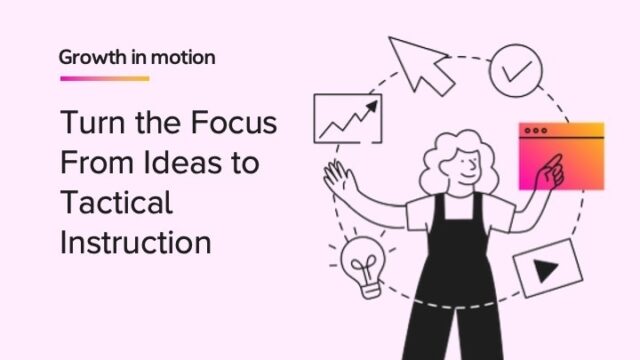
Vocabulary can be the catalyst for building reading comprehension skills, as understanding a text depends largely upon vocabulary knowledge. While estimates range slightly, many specialists estimate that a reader needs to understand a minimum of 90% of the words in a passage in order to make meaning from it, as well as to begin learning the remaining 10% of words (Hirsch, 2006). Readers who know fewer words miss out not only on understanding a text, but also learning new words, further limiting their understanding of future texts. Students’ inability to understand approximately 90% of text should not limit them from accessing grade-level texts. Rather, scaffolding of Tier 1 instruction and appropriate vocabulary intervention can help learners get and stay on track.
What is vocabulary intervention?
Intervention in education is defined as a set of action items that a teacher or administrator can take to improve a child’s academic progress. Vocabulary intervention involves using strategies with the specific goal of developing and expanding children’s word knowledge. All children learn some word meanings indirectly through daily conversations with adults and other children, by listening to adults read to them, and by reading on their own. According to a meta-analysis of research, the probability that children will learn new words while reading is about 15 percent (What Works Clearinghouse, 2011). Therefore, additional instructional supports are critical to ensure all students acquire the necessary vocabulary for success.
Vocabulary instruction is an essential piece of building reading skills among all children, including children who have already reached grade-level proficiency (Young-Davy, 2014). Typically, explicit instruction includes providing students with the definition of a word using terms at their level of understanding, presenting multiple examples and non-examples of the word, giving students opportunities to use the word in discussion, and checking for understanding. Using instructional routines, providing instruction in morphology, teaching words in clusters, and connecting words to texts are other components of explicit instruction shown to improve vocabulary knowledge.
Multiple practice opportunities are essential. Hearing, speaking, reading, and writing words in various contexts over extended periods of time builds students’ breadth and depth of vocabulary knowledge. Students’ knowledge is further strengthened when vocabulary instruction is implemented school-wide across all subject areas.
While vocabulary knowledge is critical to reading, some literacy challenges are related to other components of reading, like word study and fluency. To explore the topic of reading intervention more broadly, check out Reading Intervention Strategies for Struggling Readers and 11 Instructional Intervention Strategies and Examples.
How to prepare for vocabulary instruction and interventions
Perhaps the most important step in preparing for vocabulary instruction and interventions is identifying words to teach. With limited time, it’s not possible to address every word students will encounter, so maximizing instructional impact with intentional word selection is key. When choosing words for direct vocabulary instruction, look for words that are:
- Unknown to students
- Necessary to understand a text or unit
- Used in other contexts that students are likely to encounter
Vocabulary words are often divided into three tiers for instruction, with complexity increasing from Tier 1 up to Tier 3.
| Tier 1 Vocabulary | Tier 2 Vocabulary | Tier 3 Vocabulary |
Basic words that frequently appear in everyday conversations.
Examples: friend, speak, bright | Words that appear in academic discourse and text across subject areas and topics. Examples: evidence, analyze, dynamic
| Low-frequency, content-specific words. Examples: peninsula (social studies), circumference (math), metaphor (language arts)
|
Words that are unknown to students, necessary to understand a text or unit, and used in other contexts that students are likely to encounter will typically be Tier 2 words, and sometimes Tier 3 words. However, students with specific needs might require instruction with some Tier 1 words. For example, English language learners who are learning conversational as well as academic language may require direct instruction with idioms (e.g. the meaning of “throw in the towel”) or false cognates (e.g. éxito in Spanish means success, rather than exit) that appear in a text.
In addition to word selection, the following teaching strategies are helpful to keep in mind when planning vocabulary instruction:
- Use sentence starters to ensure students repeat target words in their responses.
- Leverage dual coding to improve students’ understanding and recall. Dual coding is a process of combining both words and visuals, like images and graphic organizers, to convey information. For example, when learning about photosynthesis, students can create a diagram using both words and pictures
- Provide, or ask students to generate, examples and non-examples to deepen understanding of words through contextual information.
- Review often to provide multiple exposures to a word in various contexts.
Instructional approaches will vary depending on the words you are teaching, the contexts they appear in, and the needs of your students.
Vocabulary intervention activities
Support students' vocabulary building with research-based vocabulary intervention activities. Instructional routines are a useful tool for delivering explicit vocabulary instruction. Once students learn the steps of routines, cognitive load is reduced, allowing them to focus on the words they are learning rather than the method of delivery. Graphic and semantic organizers are other effective tools for vocabulary intervention. They can be paired with routines to help students visualize word meanings in different ways, making them easier to integrate and remember.
Essential words routine
Use a graphic organizer to introduce target words with definitions, examples, and non-examples. Students can then practice using the words through collaborative turn-and-talk activities. Or, instead of providing the information, have students work in groups using texts and reference materials to complete the graphic organizer on their own while you circulate the room to assist when needed. Intervention programs, like Read 180, provide resources to help students build vocabulary knowledge. The example below shows a Concept Organizer from Read 180 that asks students to identify characteristics, examples, and non-examples of the vocabulary word.

Another graphic organizer that can help with direct vocabulary instruction is the Frayer model. When students use this model they define the word, give characteristics of the word, list examples and non-examples of the word, and, in some cases, create an illustration to accompany the word. The Frayer model is shown below.

Download our version of the Frayer Square Chart to use with your students.

Semantic mapping
Semantic mapping provides a visual grounding similar to graphic organizers, but through a different process. It can be as simple as students writing a word in the middle of a page and then listing all related terms around it, or a bit more advanced where students make connections between words, group them, and assign categories. Semantic mapping helps students understand how multiple words fit together and supports concept knowledge. Below are examples of two different semantic maps using the word "predict."

Morphemic analysis routine
Because there isn’t time to teach all words students will encounter, it can be useful to teach strategies for approaching unfamiliar vocabulary. The steps below give students practice analyzing morphemes to determine the meaning of new words.
- Find the root, prefixes, and/or suffixes.
- Use reference materials, other words that contain the same word parts, and context clues to think about what each part of the word means.
- Combine the meanings of the parts.
- Try the possible meaning in the sentence and ask yourself if it makes sense.
Vocabulary review activities
Multiple opportunities to practice using new words is a crucial part of vocabulary instruction. Incorporating brief review activities will help students practice and remember the meanings of important words. The reviews can be quick and simple, such as the examples below:
- Partner review: Partners work together to review words learned the previous day.
- Sentence review: Partners create sentences using words assigned by the teacher.
- Examples and non-examples: The teacher describes a scenario or shows a picture and students indicate whether it is an example or non-example.
- Fill in the blank: The teacher asks a question and students hold up an index card with the word that answers the question.
Vocabulary is an inevitable part of language learning, and it can be a fun one, too. Implementing these evidence-based vocabulary intervention strategies can provide students with engaging and meaningful practice to build the skills needed to understand texts and expand their vocabulary knowledge for future learning.
References
Hirsch, E. D. (2006, Spring). Building Knowledge. American Federation of Teachers. https://www.aft.org/ae/spring2006/hirsch
Texas Center for Learning Disabilities. (2023, November 28). Five Research-Based Ways to Teach Vocabulary. Texas Center for Learning Disabilities. https://texasldcenter.org/teachers-corner/five-research-based-ways-to-teach-vocabulary/
What Works Clearinghouse. (2011). Improving Adolescent Literacy: Effective Classroom and Intervention Practices. https://ies.ed.gov/ncee/wwc/Docs/PracticeGuide/adlit_pg_082608.pdf
Young-Davy, B. (2014). "Explicit Vocabulary Instruction." ORTESOL Journal 31: 26–32. https://eric.ed.gov/?id=EJ1152527
The views expressed in this article are those of the author and do not necessarily represent those of HMH.
***
HMH’s intervention solutions are built on over 20 years of proven results. Find out how they can boost student achievement with your students.
Get our free Reading Intervention eBook today.














